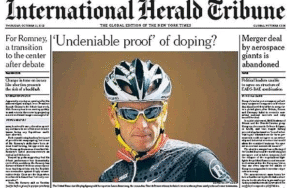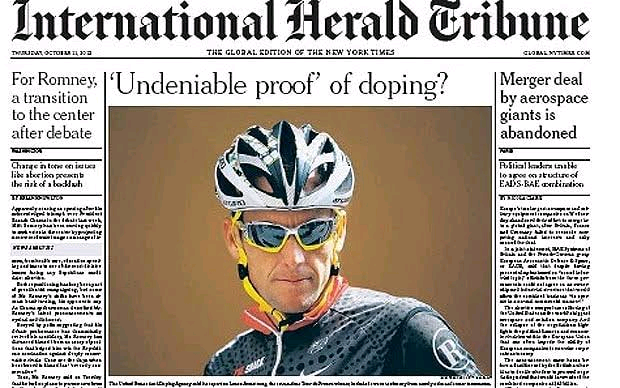**The Lance Armstrong Case:
Lance Armstrong, once celebrated as one of the greatest cyclists in history, became a household name through his remarkable achievements and inspiring story of overcoming adversity. However, his legacy was later overshadowed by one of the most infamous doping scandals in sports history. The case surrounding Lance Armstrong’s alleged use of performance-enhancing drugs (PEDs), the subsequent investigations, confessions, and repercussions have captivated the sports world and beyond for over a decade. This article provides an in-depth examination of the Lance Armstrong case, exploring the rise, fall, and ongoing implications of this doping scandal.
Early Life and Rise to Prominence
Lance Edward Armstrong was born on September 18, 1971, in Plano, Texas. From a young age, he demonstrated athletic talent, initially excelling in triathlons and later focusing on cycling. His breakthrough came in the late 1990s when he participated in the Tour de France, one of the most prestigious cycling races in the world.

In 1999, Armstrong won his first Tour de France, a victory that marked the beginning of a dominant streak. Over the next seven years (1999–2005), he claimed victory in the Tour de France every year, a feat unmatched in the sport’s history. His wins were celebrated as a testament to perseverance, resilience, and human endurance, especially considering he had been diagnosed with advanced testicular cancer in 1996, which had metastasized to his lungs and brain.
Armstrong’s remarkable comeback from cancer and his subsequent athletic achievements made him a global icon. He founded the Livestrong Foundation in 1997, which aimed to support cancer survivors and raise awareness. The yellow Livestrong wristbands became a symbol of hope and strength, further cementing his status as a hero in the eyes of many.
Allegations and Initial Suspicion
Despite his popularity, rumors and allegations about doping began circulating as early as the early 2000s. Some critics pointed to suspicious performances, inconsistencies in his physiology, and claims from former teammates and rivals. However, Armstrong consistently denied doping, asserting that he was clean and that his success was due to hard work, discipline, and natural talent.
The U.S. Anti-Doping Agency (USADA) and other organizations initiated investigations into professional cycling’s doping practices, revealing widespread systemic doping within the sport. Armstrong, as the most prominent figure, became a central target of scrutiny.
The UCI and USADA Investigations
In 2010, the USADA launched a comprehensive investigation into doping allegations against Armstrong and his team, the U.S. Postal Service Pro Cycling Team. The investigation was based on testimonies from former teammates, scientific evidence, and other sources.
In August 2012, USADA officially charged Armstrong with doping violations, alleging that he had engaged in a “doping conspiracy” spanning over a decade. The evidence included:
– Testimonies from former teammates who admitted to doping with Armstrong’s knowledge.
– Scientific data indicating the use of banned substances.
– A detailed account from Floyd Landis, a former teammate and Tour de France winner, who accused Armstrong of doping.
Despite Armstrong’s vehement denials, the evidence was mounting.
Armstrong’s Denial and Public Response
For years, Lance Armstrong fiercely denied doping allegations. He maintained his innocence in interviews, public appearances, and in his autobiography, *It’s Not About the Bike*. His defiance and aggressive stance garnered both supporters and critics.
In 2013, after years of denial, Armstrong publicly admitted to doping during his Tour de France victories in a televised interview with Oprah Winfrey. His confession included details of a sophisticated doping program involving:
– Erythropoietin (EPO)
– Blood transfusions
– Testosterone
– Corticosteroids
He admitted that he had used performance-enhancing drugs from at least 1999 to 2005, the period of his Tour de France wins.
Consequences and Repercussions
The fallout from Armstrong’s admission was swift and severe:
– **Stripping of Titles:** The Union Cycliste Internationale (UCI) officially stripped Armstrong of his seven Tour de France titles and declared him ineligible to compete in the sport’s major events.
– **Ban from Competition:** USADA imposed a lifetime ban from professional cycling.
– **Loss of Sponsorships and Endorsements:** Major sponsors, including Nike, Trek, and others, severed ties with Armstrong, resulting in substantial financial losses.
– **Legal Actions and Civil Lawsuits:** Armstrong faced numerous lawsuits, including a notable case brought by the U.S. government, which sought to recover funds from the US Postal Service’s sponsorship of his team.
In 2018, Armstrong settled a lawsuit with the U.S. Department of Justice for $5 million, acknowledging that the government had been defrauded by its sponsorship payments.
Impact on the Sport and Legacy
The Lance Armstrong scandal had profound implications for professional cycling and sports ethics:
– **Reputation Damage:** The scandal exposed widespread doping issues, leading to increased scrutiny and reforms within cycling.
– **Doping Culture:** It prompted broader conversations about doping, performance enhancement, and integrity in sports.
– **Legacy of Armstrong:** Once celebrated as a hero and symbol of perseverance, Armstrong’s reputation was irreparably tarnished. His achievements are now viewed through the lens of doping and deception.
Despite the scandal, some continue to debate whether Armstrong’s story serves as a cautionary tale about the pressures of elite sports or as a reflection of systemic issues within professional cycling.
Broader Reflections and Lessons
The Lance Armstrong case highlights several critical themes relevant to sports, ethics, and society:
1. **The Pressure to Win:** The intense desire for victory can lead athletes to engage in unethical behaviors.
2. **Systemic Doping:** The case uncovered a culture of doping that was often tolerated or ignored by organizations and officials.
3. **The Cost of Deception:** Armstrong’s fall from grace demonstrates how deception, once uncovered, can destroy reputations and careers.
4. **Importance of Anti-Doping Measures:** The scandal underscored the necessity for rigorous testing, transparency, and accountability in sports.
The Lance Armstrong case remains one of the most significant doping scandals in sports history. It serves as a stark reminder of the ethical dilemmas athletes face, the potential consequences of dishonesty, and the importance of integrity in competition. While Armstrong’s athletic achievements are now viewed with skepticism, his story continues to influence discussions on doping, sports ethics, and the pursuit of excellence.
In the end, the Lance Armstrong saga offers lessons about the cost of winning at all costs and the importance of truth and transparency in sports and society at large.



